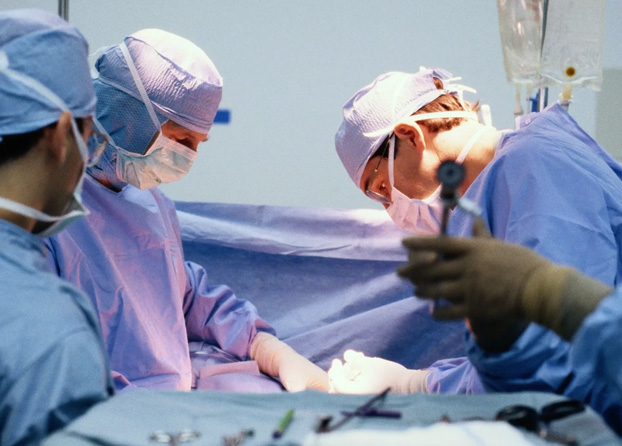How to differentiate arterial ulcer from venous ulcer?
In the field of vascular surgery, chronic ulcers of the lower limbs are like silent alarms, with arterial ulcers and venous ulcers accounting for more than 70% of cases. These two ...

Our solutions start with a need. Patients and healthcare professionals inspire us to design medical solutions for wound management, surgery and pressure ulcer prevention. We want to enhance performance at every point of care – from the operating room to the home.
In the field of vascular surgery, chronic ulcers of the lower limbs are like silent alarms, with arterial ulcers and venous ulcers accounting for more than 70% of cases. These two ...
In the vascular surgery clinic, about 65% of patients with lower limb ulcers are not diabetic patients. The root cause is venous system dysfunction. Symptoms include leg swelling, ...
Many people think that "leg ulcers" (lower limb ulcers) are a problem exclusive to diabetic patients. In fact, even if blood sugar is normal, leg ulcers may be caused by other reas...
Many people think that minor injuries are not a big deal, such as accidentally cutting your hand while cutting vegetables, bleeding due to lack of force when pulling out a hangnail...
Do foot blisters occur during exercise? Foot blisters are a common skin injury among sports enthusiasts. The core mechanism of their formation is the repeated friction between the ...
Previous article Our team EB For EB patients, wound management is not a simple wound treatment, but a core task of multi-dimensional comprehensive care throughout life. Its goal is...
In daily life, skin trauma is unavoidable, from bumps and abrasions to bruises and injuries. Local lumps may form during the wound healing process. This wound lump may seem ordinar...
Butterfly Baby, behind this beautiful name, is the pain that ordinary people can hardly imagine. Why do I say that? Its full name is hereditary epidermolysis bullosa, and the skin ...
In the realm of advanced wound care, healthcare professionals and patients are continuously seeking innovative solutions that accelerate the healing process while ensuring patient comfort and convenience. Foam dressings have emerged as a leading choice in wound management, providing a plethora of benefits that cater to various wound types and complexities. Let's delve into the answer to understand the distinct advantages of opting for Foam Dressings in the realm of advanced wound care.
1. Superior Absorption and Exudate Management:
One of the primary advantages of Foam Dressings lies in their exceptional absorption capabilities. These dressings are designed with a highly absorbent polyurethane foam material that effectively draws excess exudate away from the wound bed. By maintaining a moist wound environment, Foam Dressings promote optimal healing conditions, preventing the wound from drying out and minimizing the risk of scab formation, which can impede the healing process.
2. Minimizing Maceration and Protecting Peri-wound Skin:
Maceration refers to the softening and deterioration of healthy skin surrounding the wound due to prolonged exposure to moisture. Foam Dressings effectively mitigate this risk by absorbing excess exudate and creating a barrier that prevents leakage and maceration. The gentle adhesive properties of self-adhesive Foam Dressings ensure secure fixation without causing skin trauma upon removal, enhancing patient comfort and promoting peri-wound skin health.
3. Versatility in Wound Types and Sizes:
One of the significant benefits of Foam Dressings is their versatility in managing various wound types and sizes. From shallow to deep wounds, these dressings conform to the wound bed, providing optimal coverage and protection. They are particularly beneficial for moderately to heavily exuding wounds, making them an invaluable choice for managing chronic wounds, surgical incisions, pressure ulcers, and traumatic injuries.
4. Non-Adherent Properties:
Foam Dressings boast a non-adherent surface that minimizes the risk of the dressing adhering to the wound bed during the healing process. This property not only reduces pain and discomfort during dressing changes but also preserves the newly formed granulation tissue, which is vital for wound healing.
5. Enhanced Patient Comfort:
Patient comfort is a crucial aspect of wound management, as it can significantly impact the overall healing experience. Foam Dressings are lightweight, soft, and conformable, ensuring a comfortable fit that allows patients to carry on with their daily activities without disruption. Their non-bulky nature also facilitates easy dressing application under compression bandages or clothing, further enhancing patient compliance and comfort.
6. Facilitating Controlled Moisture Vapor Transmission:
Foam Dressings exhibit a semi-permeable nature that allows for controlled moisture vapor transmission. This characteristic ensures an optimal balance between wound moisture levels and helps prevent wound desiccation or excessive moisture retention, supporting the formation of healthy granulation tissue and ultimately accelerating the healing process.
7. Easy Application and Removal:
The self-adhesive variant of Foam Dressings simplifies the dressing application process, providing healthcare professionals with a time-efficient and secure solution. Moreover, the gentle and pain-free removal of self-adhesive Foam Dressings contributes to a positive patient experience and reduces the risk of skin damage.
8. Cost-Effectiveness and Reduced Dressing Changes:
Foam Dressings offer a cost-effective solution for wound management. Their high absorption capacity reduces the frequency of dressing changes, minimizing the need for constant replenishment and contributing to cost savings over time.
In conclusion, Foam Dressings stand out as an advanced wound care solution that combines superior absorption, versatility, patient comfort, and ease of application. With their remarkable exudate management properties, non-adherent surface, and moisture control capabilities, Foam Dressings facilitate an optimal wound healing environment. By choosing Foam Dressings, healthcare professionals and patients can ensure efficient wound management, reduced complications, and enhanced patient well-being. As a leading manufacturer, supplier, factory, and company of Foam Dressings, we are committed to delivering top-quality products that redefine wound care and contribute to better patient outcomes.